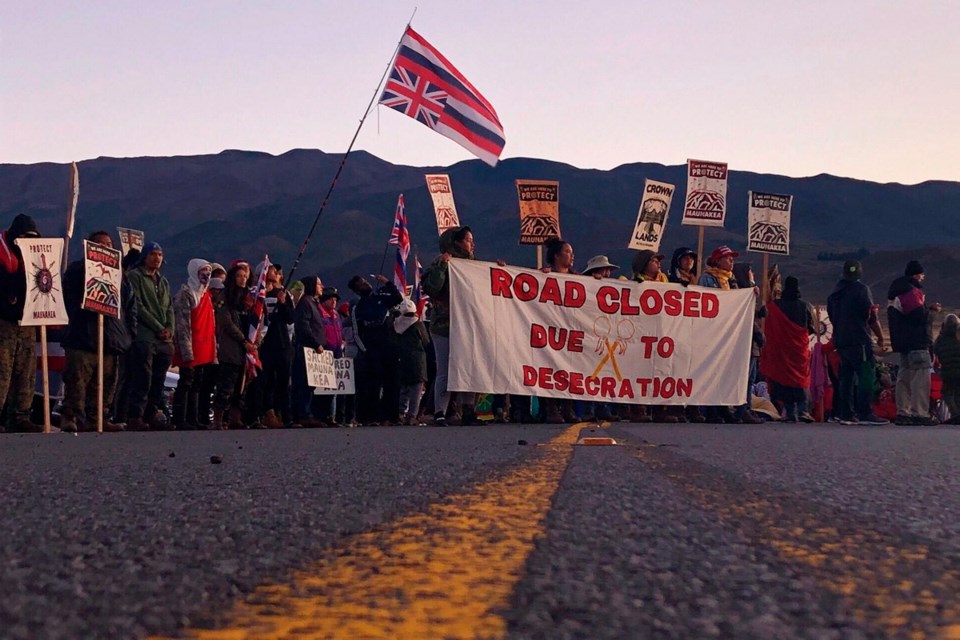University of Victoria astronomers are holding their breath as protesters, saying they are protecting ancestral land, block construction of a leading-edge telescope on Hawaii’s Mauna Kea mountain.
Kim Venn, director of astronomy research at the University of Victoria, said the situation puts all astronomers in a terrible spot, stuck between scientific curiosity and the moral imperative to respect Indigenous human rights.
“All astronomers in Canada would agree we don’t want to see this project built in a location where it is not welcome,” said Venn. “So, right now, we are watching and we support the Hawaiians to work this out.”
UVic vice-president of research Lisa Kalynchuk issued a statement affirming the university’s commitment to Indigenous peoples’ rights.
“The TMT will provide enormous scientific benefit to astronomy research and support advances in knowledge,” wrote Kalynchuk.
“However, these benefits should not be achieved without the engagement and support of local Indigenous people.”
Last week, in the face of continuing protests, a backup plan was announced to put the telescope in Spain’s Canary Islands. But Hawaii’s Mauna Kea is still the preferred site.
Mauna Kea’s elevation, 4,050 metres above sea level — versus 2,250 metres at the Canary Islands site — would allow the telescope to peer through less of the Earth’s image-distorting atmosphere.
Three weeks ago, construction was halted when protesters blocked access to the telescope site. The protest grew as it attracted entertainers with Hawaiian or Polynesian connections, including Dwayne (The Rock) Johnson, Jason Momoa and Bruno Mars.
The new telescope is called TMT, for 30-Metre Telescope, to describe the size of its aperture. Projected to cost $1.4 billion US, it will be more powerful than the space-based Hubble Telescope.
Protests and legal challenges date back years. Last year, the Supreme Court of Hawaii ruled all permits were valid and construction on the telescope could proceed.
In 2015, Canada pledged $243.5 million toward the project, making its National Research Council a full partner. Other partners include Japan, China, India and two California universities, all anxious to see it built.
Mauna Kea already has telescopes dating to the 1960s. It has 13, many of which are expected to shut if TMT is completed.
Venn said UVic researchers working through the National Research Council have played a key role in developing technology behind the new optics of TMT. She agreed that the technology can go anywhere, including the Canary Islands.
But she said Mauna Kea really is the best site in the northern hemisphere for the telescope.
“The 30-Metre Telescope is really the next step,” said Venn.
“Lots of people are interested in exoplanets [planets outside our solar system] and other planets that are Earth-like and might have alien life,” she said. “This [TMT] is the next step towards looking for those.”



